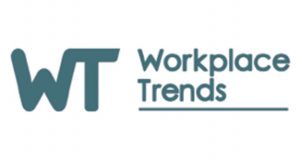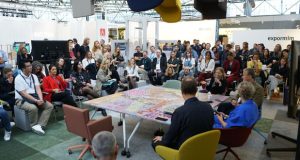 Organisations pondering the post pandemic workplace need to determine exactly what is the right fit for them. This begins by asking the right questions, finds the 2021 Workplace Trends Research Summit
Organisations pondering the post pandemic workplace need to determine exactly what is the right fit for them. This begins by asking the right questions, finds the 2021 Workplace Trends Research Summit
The world has gone through the most disruptive year in living memory. From a workplace perspective there have been many predictions, most more headline grabbing than useful, on how the world of work may look when the pandemic ebbs.
The annual Workplace Trends Research Summit, which took place in April, selects the best presentations from submitted abstracts of recent applied research projects, to provide some timely updates on current and future thinking on work and the workplace.
The online event, which benefited from its virtual platform in being able to feature speakers from around the world, was chaired as ever by Environmental Psychologist and Workplace Strategist Nigel Oseland, direct from his Sustainable Habitat with Enhanced Design (SHED).
How we work in the future is currently in the spotlight more than ever before, so it was appropriate to begin the day with research from Andrew Barnes, Founder of New Zealand based estate planning services firm Perpetual Guardian, who has successfully implemented a four-day week for all staff. The five-day week is a construct from the 1930s and 1940s manufacturing base where people were doing repetitive tasks he explained. It doesn’t apply to modern knowledge workers. However, despite being able to reference the success of his project he warned anyone considering implementing this mode of working to do some careful planning and monitoring. The greatest risk from working at home is slipping into overwork, he advised, that is, not working from home, but sleeping in the office.
NO PLACE LIKE HOME?
Delving into the results from a global Herman Miller survey on the changing sentiments towards home and office work Bertie van Wyk dispelled the illusion that the home is a quiet oasis of calm and productivity. It shows that 20 per cent of respondents play loud music to distract them from background noise, almost 10 per cent work from surfaces such as their lap, table or bed, just 25 per cent have an ergonomic chair and 65 per cent find productivity and focus is their biggest challenge. The belief that the office is dead is far from the truth he argued, as research suggests that close work friendships boast employee satisfaction rates by 50 per cent.
Kate Lister of Global Workplace Analytics, who has long advocated that remote work benefits employers, employees, the environment, and society was understandably in favour of encouraging remote working post- pandemic. But, as she explained, whereas before the pandemic planning for home or remote working would be months in the making, our society moved into wholescale home working in a matter of days in March/April 2020. Organisations she said that contemplate a permanent hybrid or home working model must ensure they’ve senior executive support. “If the leadership wants their people to work remotely they have to do it themselves. I’m fearful that companies aren’t going to do the change management to make this remote working model work.”
BACK TO THE WORKPLACE
We’ve all been surprised at how effectively people have been at working from home, said Researcher Daniel Davis of architect Hassell, in the opening to his presentation on how to structure the workplace after COVID. This leaves us in a strange place as we exit the pandemic with the place of work presenting a variety of choices:
- As it was – back to the office
- Turbocharged – activity-based working with a more efficient sharing ratio
- Clubhouse – maximise collaboration, connection and socialisation
- Hub and spoke – live and work in the same area
- No office – permanent remote working
Drawing from a survey into how the Australian office sector which has already reopened its offices is faring, he reflected that one of the most interesting results is that most have assumed a single dominant model from the list above. None of these categories are new. What is different is the breath of options being considered. Each involves trade-offs he warned, which is why leaders must assess the demographic differences within their organisations and avoid making huge decisions on their post- pandemic workplace without engaging with their employees. “And remember” he said, “one size doesn’t fit all, and it never has”.
Davis’s warning was echoed by the views of Sinead O’Toole of Sheffield Hallam University, who as an introvert, dreads the creation of super cool ‘super-collaborative’ environments which do not allow for diverse needs.
Our world of work isn’t set up for quieter people, but through lockdown the world has been turned upside down, and introverts have enjoyed working from home, (the lack of interruptions and quiet time) while many extroverts struggled.
“It says something about our pre COVID workplace, that it wasn’t working for introverts”, she said. “Diverse workplaces are going to require really thoughtful engagement and design. The most important thing to remember is that people are a really diverse bunch and to recognise that we need to engage with all of them and really start to listen.”
Listening to occupants’ needs is what the Leeman Group is all about, so it was fitting that its Chief Insights and Research Officer, Dr Peggie Rothe was on hand to share some data on what an office needs to deliver in 2021 and beyond. Drawing on the mass of data their research has unearthed, she concluded that there are three things that will be crucial in 2021. These are people, place and time.
PUT PEOPLE FIRST
By putting people first employers can determine the purpose of the workplace, and the best way to do that is by asking what do they need? Focus then on the places you provide to ensure you’re providing an outstanding experience. Leesman research during lockdown shows that the overall experience for the average office worker has been lower than working from home. Only 64 per cent said the office enabled them to work productively compared to 83 per cent at home. This means, she said that the average home which is designed for living is better than the average office designed for work.
Finally, there is the time aspect. As workplaces prepare to open up, now is the time for employers to act. We’ve all been testing home working for quite a while now and we need to be ready for the post-COVID landscape she concluded.
Each organisation needs to make their own decision on how they want to operate in the future. As Lister pointed out, there is an opportunity here to not hit the reset button and avoid recreating processes that were wrong in the first place. There is a fundamental opportunity for individual organisations to rethink the who, what, when, where, why and how of work and they can begin by asking the right questions.




